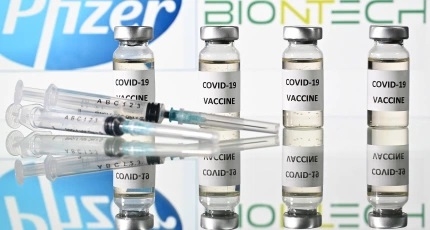HOPE FLOATS
| Date :20-Nov-2020 |

AS THE global race to find cure for the coronavirus reaches a critical stage, hope has started floating in the form of latest announcements by pharmaceutical giants about vaccines’ readiness. Pfizer and its German partner BioNTech have claimed 95 per cent effectiveness of their COVID-19 vaccine that protects older age group people from falling prey to the pandemic. Moderna, the other American pharma behemoth, has also released 94.5 per cent efficacy results. Meanwhile, in another promising news, a potential coronavirus vaccine developed by AstraZeneca Plc and Oxford University has produced a strong immune response in older adults.
All the developments have raised anticipation of a foolproof dose against the virus even as a second wave threatens to grip population across the globe. Vaccine doses from Pfizer and Moderna will be available for distribution in late December. This shifts the focus on the production and distribution part. Every affected country in the world is seeking a quick delivery to safeguard its populace. It remains a big challenge for the pharma companies and scientists’ community to scale up availability of the vaccine while catering to the humongous demand. Rising caseload of coronavirus is another factor that needs to be taken into account for the distribution and delivery part. Scaling up production is one solution but it entails ample availability of support material. Further, it will take some time even if the doses are brought into the market in December.
The World Health Organisation (WHO), too, has acknowledged that supplies of the vaccine will be limited in the short to medium term. This makes it imperative for countries like India, which is the largest vaccine producing country, to add impetus to the indigenous COVID-19 production trials. The vaccine production front at home has seen some positive developments in the last few days. The third phase of the clinical human trials of India’s indigenous COVID-19 vaccine has begun at Rohtak PGIMS. Data from mid-stage trials has given hope that the vaccine would protect some of those most vulnerable to coronavirus and those aged over 70 could build robust immunity to the disease. Success of the indigenous vaccine can make India one of the pioneering nations of the world in near future.
As per early results, the Indian COVID-19 vaccine is unique as it has shown minimum side-effects. Entire science community would be banking on the success of the vaccine in the next phase so that India can tackle the problem on its own. The next step that must be deliberated by all stakeholders now is the considerations for the vaccine’s distribution. Identifying the vulnerable group and susceptible pockets will be a challenging task for the policy-makers given the vastness of the country and shifting hotspots of the virus. Delhi is a prime example of how things have changed for the worst, pushing it to the brink of a disaster with rising coronavirus positive cases.
Further outbreak in other towns and cities which have shown remarkable recovery cannot be ruled out as no concrete data is available on the survival of the virus in different climate conditions. These factors make it necessary for the Government and health authorities to mark the target groups needing immediate doses. Priority in allocating and administering the vaccines must be finalised in the next few days. Many things will be deliberated upon while choosing the people and places needing inoculation. The health workers or frontline corona warriors are among the most sensitive people who can stake a rightful claim on the first doses.
Equally important will be the elderly and those with the comorbidities. Keeping in view the plans to reopen schools and colleges, the students will also be needed to be shielded from the virus. And then care must be taken against populist use of the vaccine to gain political mileage. A fair process can be evolved only after healthy conversation between the medical professionals and policy-makers.